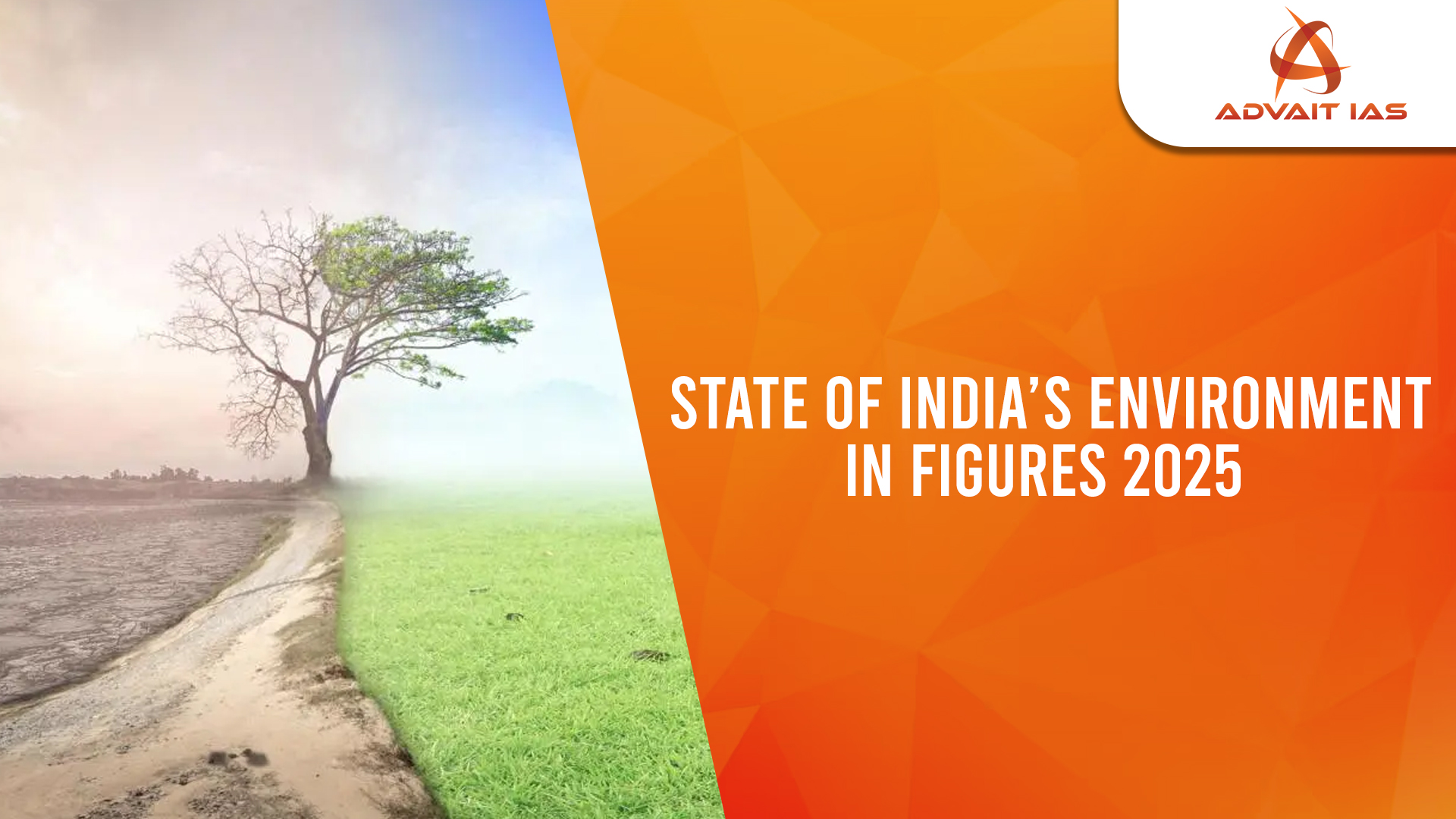The Centre for Science and Environment (CSE) and Down To Earth released the State of India’s Environment in Figures 2025.
- The report highlights critical challenges across environment, agriculture, public health, and human development, using 48 publicly available indicators.
- No Indian state or UT performed well across all parameters.
Key Findings:
Environmental Crisis
- Warmest Year on Record: 2024 marked India’s hottest year, with 25 states witnessing extreme rainfall.
- Climate Migration:
- 88% of 2024 days saw extreme weather events.
- 4 million internal displacements, nearly half from Assam.
- Floods caused two-thirds of these displacements—highest since 2013.
- Rising Emissions:
- India’s global GHG share reached 8% (2023) — highest since 1970.
- Emission growth rate rose nearly 1% (2020–2023).
- Forest Loss:
- 29,000 ha diverted in 2023–24, mainly in Jharkhand and Uttar Pradesh — highest in a decade.
- Wildlife Conflicts:
- Elephant-related deaths up 36%, tiger attacks killed 82 people (2023–24).
- Toxic Waterways:
- Heavy metals found in ~50% of monitored river sites (2022).
- Waste Crisis:
- E-waste surged 147% in 7 years.
- Plastic waste reached 4.14 million tonnes (2022–23).
Agriculture and Land Use
- Sikkim: Leads in organic farming and land sustainability but lags in farmer welfare.
- Groundwater Depletion: 135 districts extract groundwater from depths >40 metres — nearly double from 2014.
Public Health and Pollution
- Air Pollution:
- Unsafe air for 1 in 3 days in 13 state capitals since 2021.
- Life expectancy reduced by 8 years in Delhi, 6 years in Lucknow.
- Healthcare Gaps:
- 36% shortfall in Community Health Centres.
- 80% deficit in medical specialists.
- High Health Costs:
- Out-of-pocket expenses at 45%, with UP at 66%.
- 06 million excess deaths (2020–21) — 6× official COVID count.
Economic and Social Vulnerabilities
- Income Decline: Real incomes of salaried and self-employed fell (2017–2023).
- Informality: 73% of workforce is informal; 50% lack basic protections.
- Gender Gap: Only 20% of women in full-time jobs vs 60% men.
Recommendations and Government Responses
- Climate Adaptation: Strengthen NAPCC missions (e.g., Solar Mission, Green India Mission).
- Pollution Control: Enforce waste management laws; learn from Rwanda’s plastic ban (2008).
- Health Coverage: Expand PM-JAY (Ayushman Bharat); reduced out-of-pocket expenses by 60%.
- Social Security for Informal Workers: Use Code on Social Security (2020), DBT for MGNREGA workers.
- Data Transparency: Promote open access to data for evidence-based policymaking.
The report underscores the urgent need for integrated policy responses to address environmental degradation, public health stress, and economic inequality. Sustainable development, inclusive growth, and climate resilience must be core to India’s development paradigm going forward.






